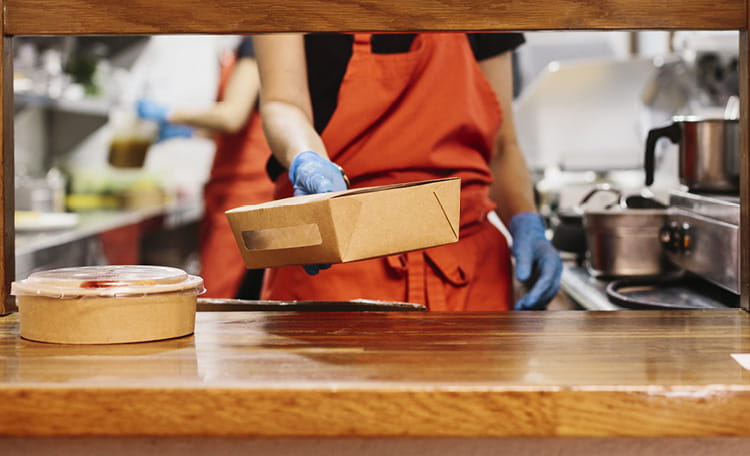
In Volume 4 of The Edge Magazine, I shared my views on the state of the world. Looking back to that piece written only a few months ago, we were correct in our assertions that the office has changed forever, technology is no longer optional, physical has become digital and real change has come and is still coming.
The global populous has continued to adapt incredibly well to the vagaries we’re seeing arise as part of the ongoing pandemic. People have recognized, that at least for an extended period, this is the life we’re living, and these are the adaptations we need to make. As predicted by many—epidemiologists, politicians, economists and even real estate professionals—the virus hasn’t dissipated, it hasn’t vanished, and all isn’t well after a short sharp shock to our system. Instead, COVID-19 continues its grip on major parts of the world.
We’ve experienced new outbreaks in places the virus was thought dormant or hadn’t seen cases for 30 days or more. New Zealand, Australia, South Africa and Hong Kong have all seen (and the distinction is still to be made) either second waves or more likely an extension of the first. Dramatically increased numbers are now being seen in Western Europe. And the numbers we’re seeing across the globe continue to rise, although as we get better at testing, there is some evidence to suggest this is a factor of test volumes as opposed to a true increase in numbers. Whatever the detail around the numbers, we recognize that until there is a vaccine, our lives will continue to be challenged and disrupted.
Impacting the Global Economy
As expected, the pandemic has had a dramatic impact on global economies, unemployment, consumer spending and the political narrative. The U.S. dollar has seen a near 10 percent drop since the high reached in March 2020, which has been greeted in positive terms for the economy, at least in the short-term. A weaker U.S. dollar naturally boosts competitiveness relative to overseas suppliers and it makes countries attractive to foreign currency investment and tourism (although tourism, of course, has not yet recovered to its pre-COVID-19 levels). The U.S. stock markets remain near record highs with investors sticking to the view that the economy will recover, and spending levels will increase. The UK saw its biggest slump on record entering a recession for the first time since the Global Financial Crisis (GFC). The U.S. and Eurozone already confirmed their recessions as the global economy continues to struggle in the grips of the sharpest downturn since the great depression in the 1930s. On a positive note, we are now technically already out of recession as we are very likely to see GDP growth through the end of the year (albeit not getting us back to pre-pandemic times).
GDP figures will bounce back as factories open and resume production, and shoppers head back to stores for items other than the essentials they have been purchasing to date. There is a sense of pent up demand, as shopping centers across Europe have reopened. We’ve experienced footfall returning to pre-pandemic levels and bars and restaurants have had turn people away because they are too busy. The issue with this recession has not been one of demand, it’s been supply led. We haven’t had the chance to spend the money we’d like to, as opposed to not having the money to spend. We will have to contend with relatively high levels of unemployment for a period of time and whilst we have had visibility of what that looks like in the U.S., we are yet to truly understand the impact it will have on major European countries once furloughs end. At the time of this writing, one third of all employees in France, Germany, Spain, Italy and the UK are being sustained by government. While this is high, in New Zealand, the virus has seen 74 percent of people actively participating in a job retention scheme.
Trends Taking Off
The pandemic has been an accelerant of many of the trends that we have been experiencing over the past few years:
- The evolution of retail and growth in logistics and warehousing
- Working from home and the capacity to be a digital nomad
- The development of online education and learning platforms
- A recognition that there is a direct link between business and the environment
Those that say with confidence that once the virus has faded away, we’ll move back to the old way of life are simply wrong and mistaken. There have been terrible consequences of the pandemic: loss of life, devastated families, education interrupted, businesses folded, and jobs lost. We can’t hide from this and we shouldn’t. I do believe that we now have a responsibility as a society and as individuals to make a fundamental difference.
The topic of mental well-being has been addressed over the past few years and has gained a greater degree of acceptance over the past six months. We’ve taken a great leap forward in recognizing the importance of wellbeing, both physically and mentally. One such question that needs to be considered is how we maintain visibility of the health of colleagues when they are away from the office workplace. There will be a new way of working that will address this important topic. Through Cushman & Wakefield’s proprietary Experience per Square FootTM (XSF) tool, we’ve captured 1.7 million data points from more than 50,000 respondents in the current work from home environment — and it's reassuring to see the data reflect the importance surrounding positive health and wellbeing.
Change is Now
COVID-19 has changed our lives. We continue to see incredible levels of adaptation to the new way of being, amazing stories emerge each day of people going above and beyond the call of duty
in the care of their family, friends and loved ones. During this time, it has been gratifying to see the physical environment playing such a key role and making the changes required to keep people safe and well. We must take the good from the past few months and carry that forward with us. The time to change is today, a series of small changes now will have a big impact on how we live in the future.
PART 1
To be at the center of a global crisis is to be part of an uncertain future. The change that is seen following a crisis is often a result of a collective will to evolve. Situations that seem life-altering while the experience is occurring often turn out to be mere blips in the evolution of society. Raging bull markets, fierce bear markets, changes in government, famine, natural disasters all trigger emotional responses as they happen, but rarely do they lead to recognizable ongoing global change. This event, however, does feel different. This time, the scale, the level of attention and the helplessness and impact on our daily lives, may indeed result in permanent change, a new normal.
New Normal (image)COVID-19 will force many sectors of the economy, including real estate, to adapt and evolve. Real change is coming.
In this article, we discuss why technology is no longer optional, if the workplace has changed forever and why real change is coming in a post-COVID-19 world.
Read part 1.




